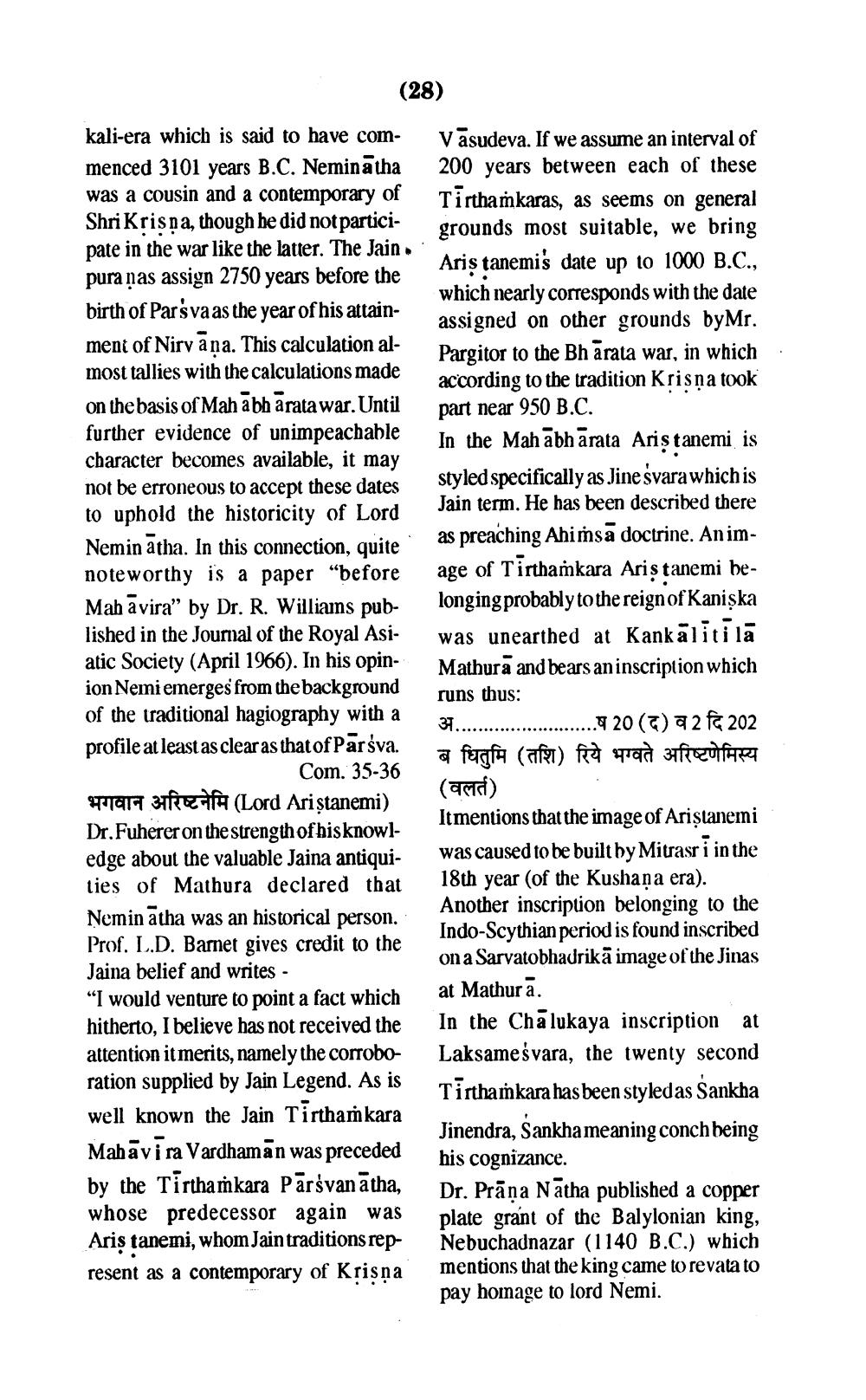________________
(28)
kali-era which is said to have com- menced 3101 years B.C. Neminātha was a cousin and a contemporary of Shri Krisna, though he did not participate in the war like the latter. The Jain. pura nas assign 2750 years before the birth of Parsvaas the year of his attainment of Nirvana. This calculation almost tallies with the calculations made on the basis of Mahabharata war. Until further evidence of unimpeachable character becomes available, it may not be erroneous to accept these dates to uphold the historicity of Lord Neminātha. In this connection, quite noteworthy is a paper “before Mah āvira” by Dr. R. Williams pub- lished in the Journal of the Royal Asiatic Society (April 1966). In his opinion Nemi emerges from the background of the traditional hagiography with a profile at least as clear as that of Pārsva.
Com. 35-36 भगवान अरिष्टनेमि (Lord Aristanemi) Dr. Fuherer on the strength of bisknowledge about the valuable Jaina antiquities of Mathura declared that Nemin atha was an historical person. Prof. L.D. Barnet gives credit to the Jaina belief and writes - “I would venture to point a fact which hitherto, I believe has not received the attention it merits, namely the corrobo ration supplied by Jain Legend. As is well known the Jain Tirtham kara Mahāvīra Vardhaman was preceded by the Tirthamkara Pārsvanātha, whose predecessor again was Ariş tanemi, whom Jain traditions represent as a contemporary of Krisņa
vasudeva. If we assume an interval of 200 years between each of these Tirthařkaras, as seems on general grounds most suitable, we bring Ariş tanemis date up to 1000 B.C., which nearly corresponds with the date assigned on other grounds byMr. Pargitor to the Bh ārata war, in which according to the tradition Krisņa took part near 950 B.C. In the Mahābhārata Ariştanemi is styled specifically as Jine svara which is Jain term. He has been described there as preaching Ahimsā doctrine. Animage of Tirthamkara Aristanemi belonging probably to the reign of Kaniska was unearthed at Kankälitila Mathura and bears an inscription which runs thus: 34......................920() a 2 fa 202 ब धितुमि (तशि) रिये भग्वते अरिष्टणेमिस्य (ar) Itmentions that the image of Ariştanemi was caused to be built by Mitasr i in the 18th year (of the Kushana era). Another inscription belonging to the Indo-Scythian period is found inscribed on a Sarvatobhadrikā image of the Jinas at Mathura. In the Chā lukaya inscription at Laksameśvara, the twenty second Tirthamkara has been styledas Sankha Jinendra, Sankha meaning conch being his cognizance. Dr. Prāņa Nātha published a copper plate grant of the Balylonian king, Nebuchadnazar (1140 B.C.) which mentions that the king came to revata to pay homage to lord Nemi.




